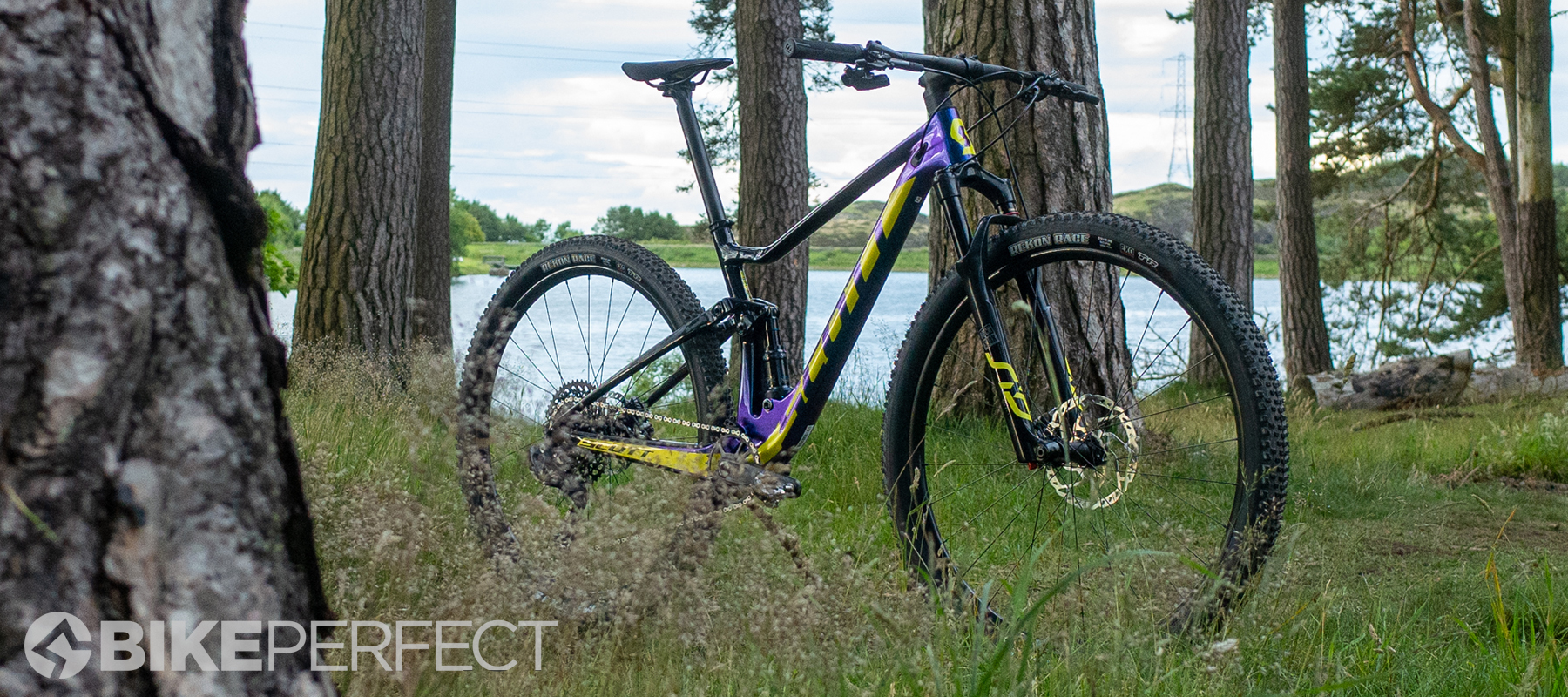Bike Perfect Verdict
A cross country bike that is as accomplished at winning races as it is encouraging a fast and playful grin-inducing riding experience
Pros
- +
The feeling of free speed only encourages faster riding
- +
Natural and confident handling
- +
Very composed when pushed to its limits on technical terrain
- +
Twin Loc is usable and effective
- +
Well specced for the money
- +
Stunning paint
Cons
- -
Fork can't match smoothness of the rear shock
- -
No dropper post
- -
Allowance for only one bottle cage
Why trust BikePerfect
The Scott Spark RC cross country race platform has proven itself as a bike capable of competing at the highest level. Piloted to 2019 World Cup overall victory by cross country legends Nino Schurter and Kate Courtney, this success is just one of many that Scott’s cross country race bike has collected in the last four years.
The Scott Spark RC 900 Team Issue AXS is the cheapest bike in the range that is equipped with SRAM’s wireless X01 Eagle AXS. While it’s £4,499 price tag couldn’t be described as budget, the fact you’re getting a race-proven frameset with wireless shifting and a complete build that is ready to race makes this a bit of a bargain. While the collection of accolades achieved aboard the Spark RC is telling of its race prowess, does this translate to a bike that’s fun to ride?
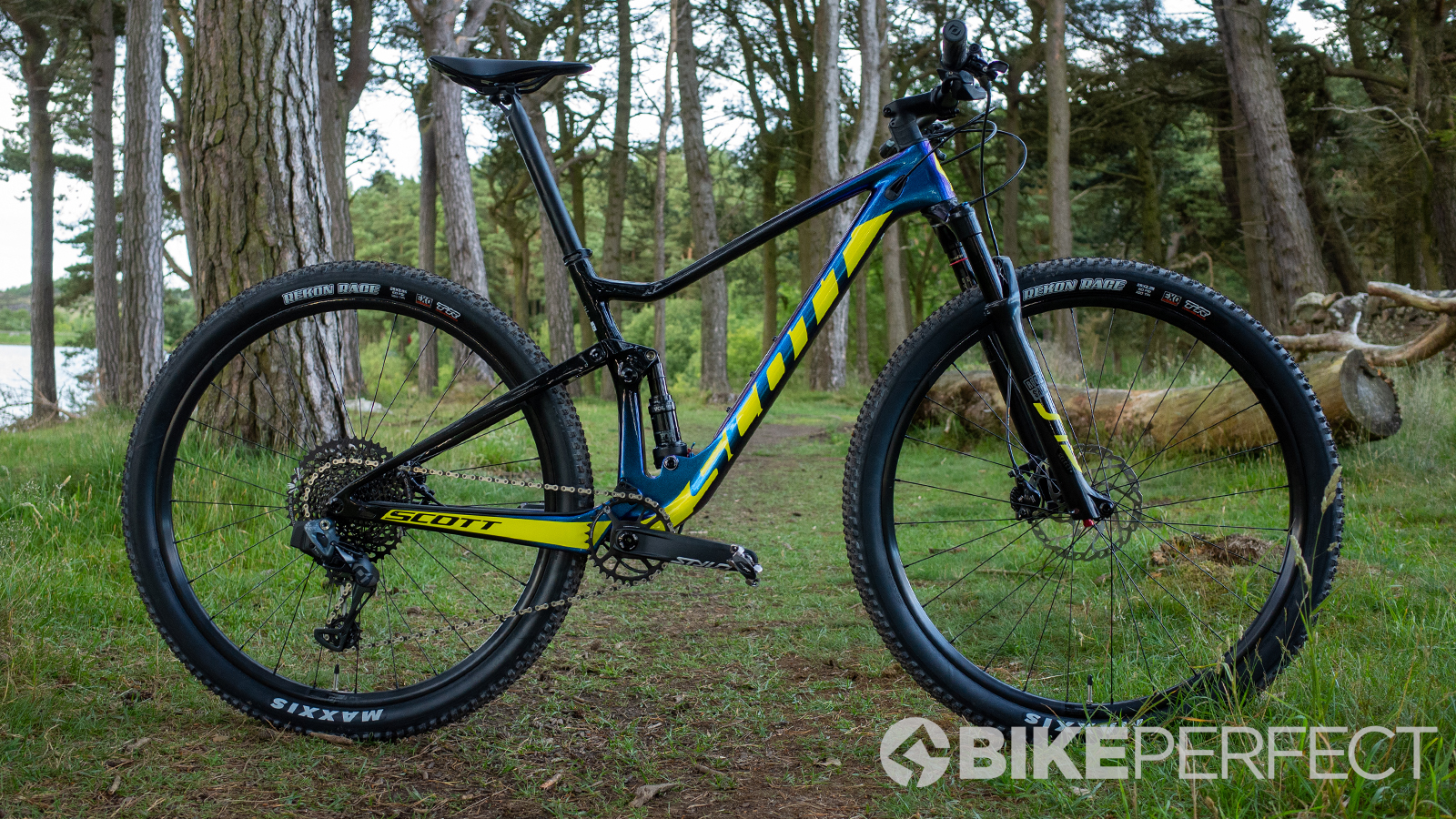
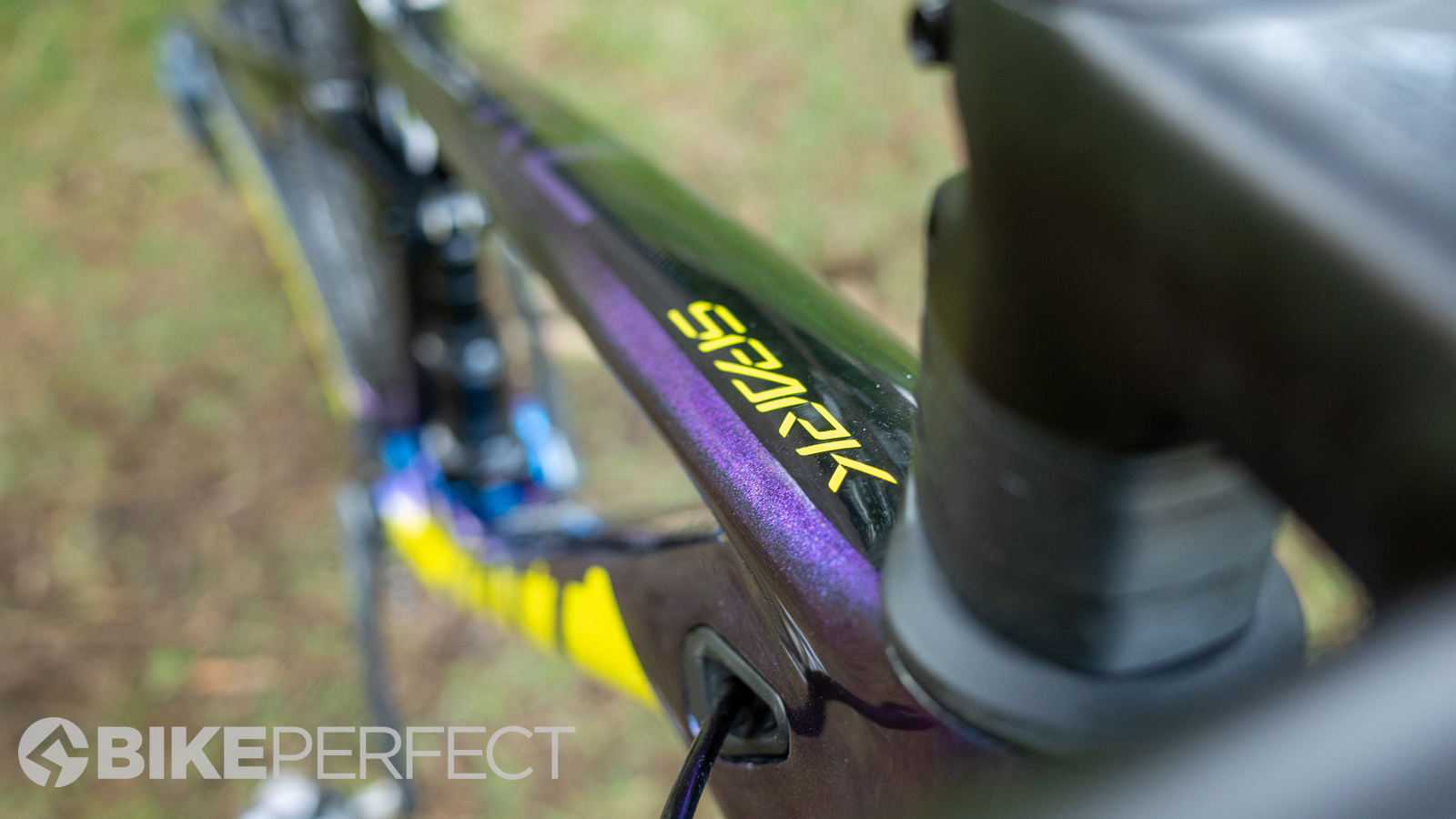
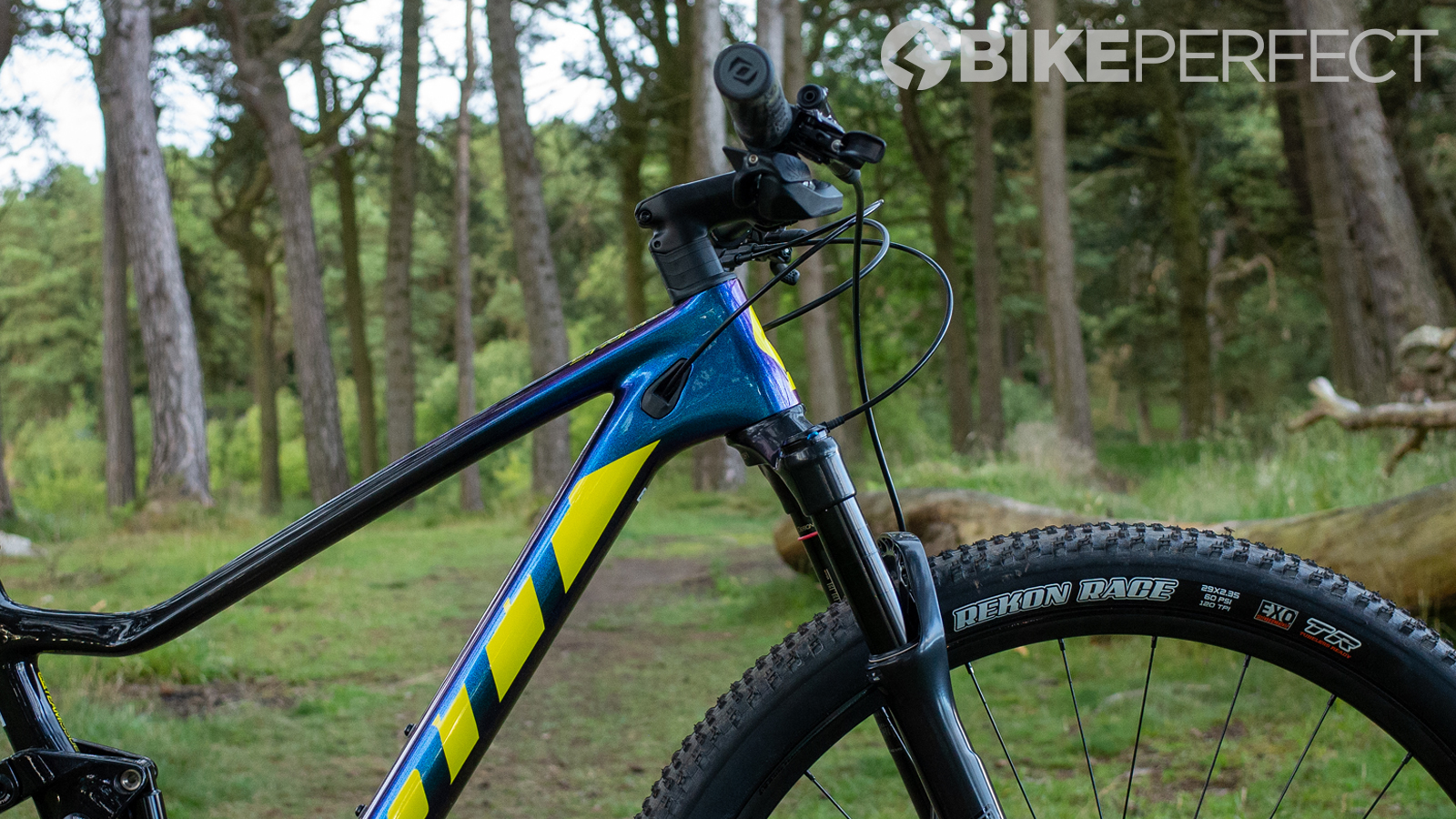
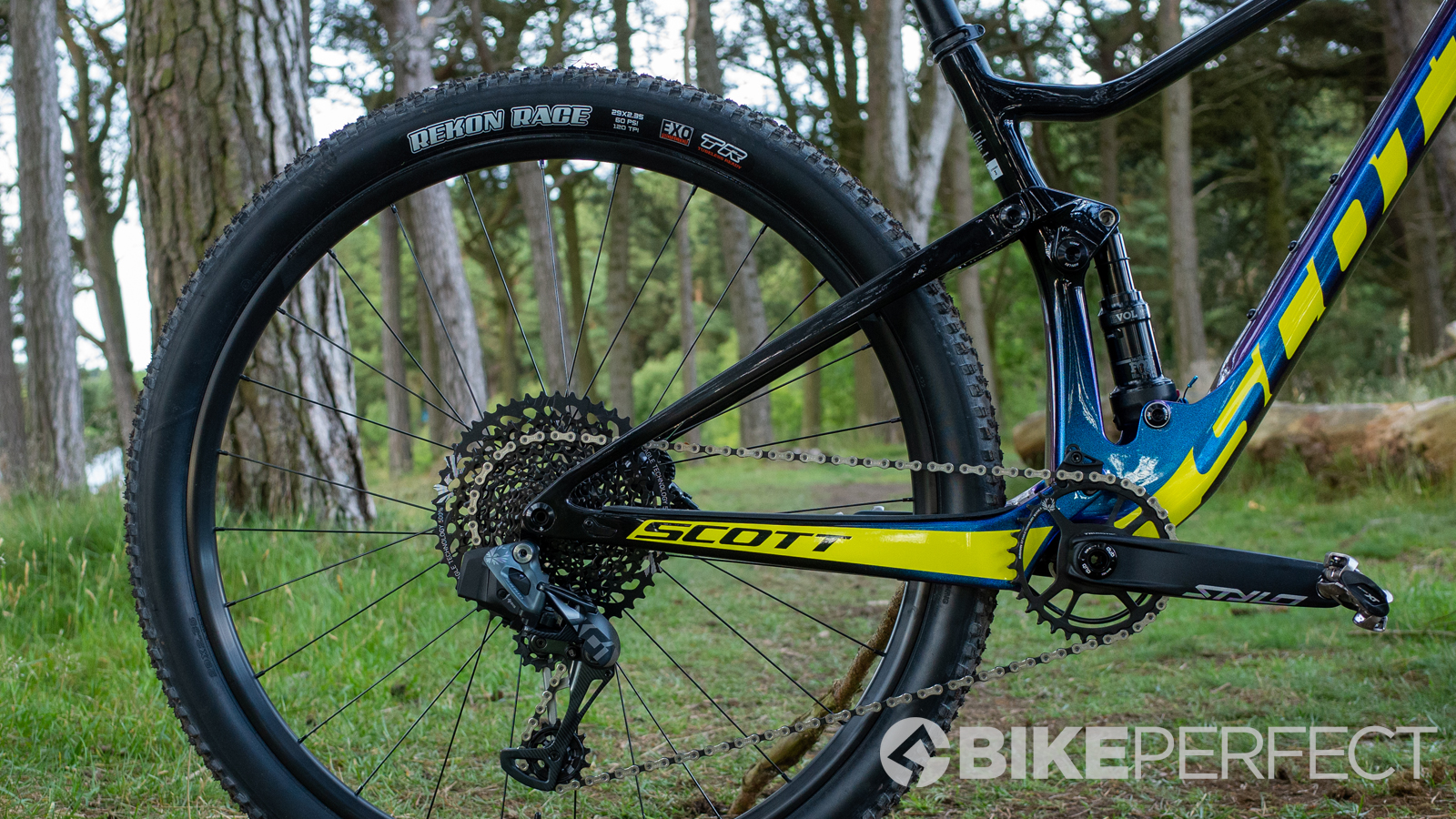
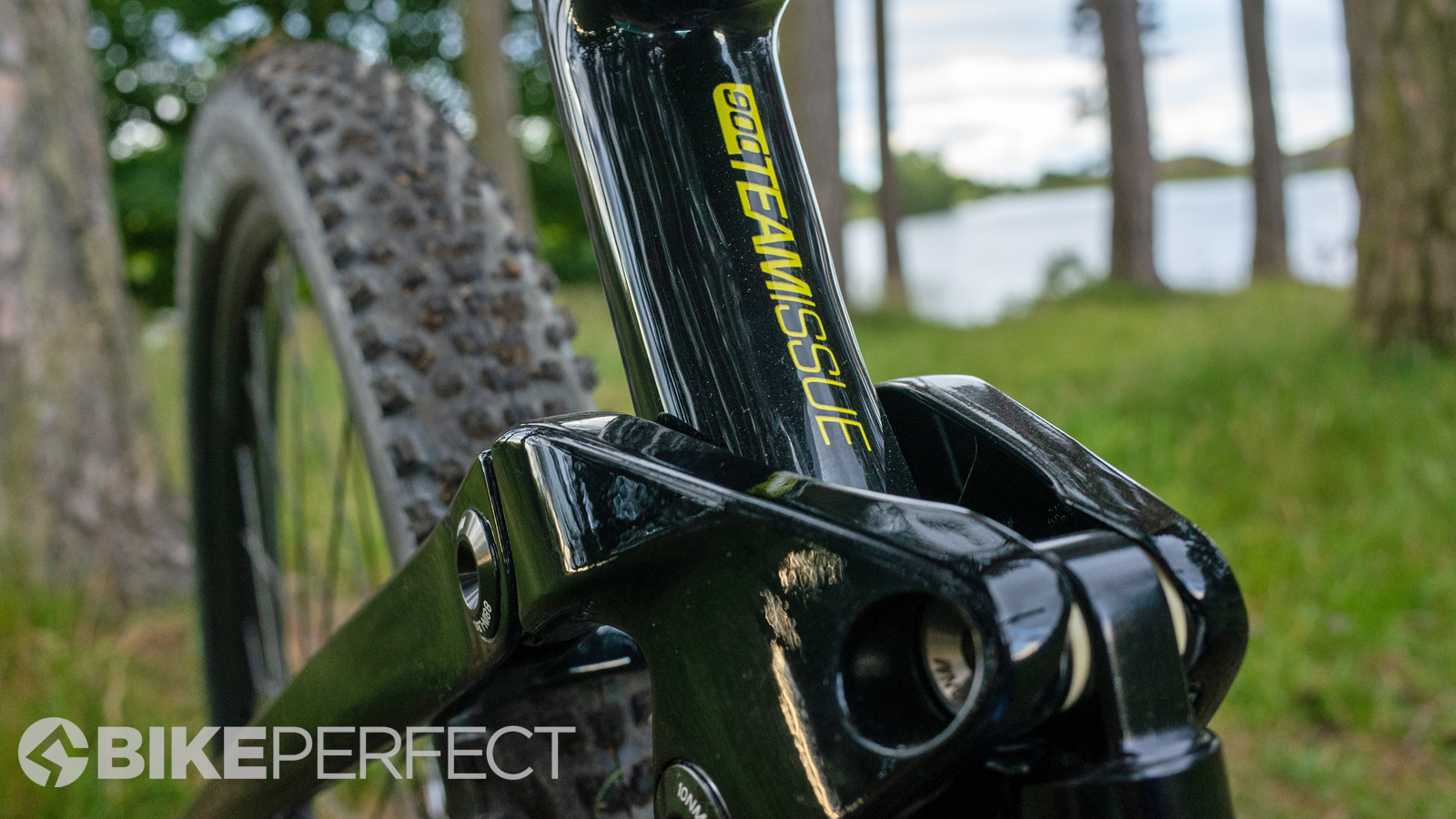
Design and geometry
The Scott Spark RC was designed for the 2016 Olympics and what was a progressively designed cross country bike is now four years old. A lot changes in four years, in 2016 cross country was still being raced on 650b wheels, front derailleurs were commonplace and the name downcountry had yet to be coined. On paper, the Scott Spark RC is not as progressive as it once was, especially when compared to 2020’s crop of radical XC bikes that are matching what was 2016 enduro bike geometries.
However, the Spark's 68.5 degrees head angle, 73.8 degrees seat angle and 600mm top tube are still in the ballpark when compared to other dedicated XC race bikes. Combined with the Boost spacing, Trunnion shock mount and unmatched Twin Loc system the Spark RC hardly shows its age.
The frame is built from Scott’s HMF carbon fibre which is a step lower than the HMX SL used in the top end framesets ridden by Nino. A kinked top tube gives plenty of stand-over clearance and the meaty bottom bracket area and chainstays keep the frame taut under lateral forces. The 100mm of suspension is actuated using a single pivot rocker link layout with flex designed into the seat stays to negate the need for a heavier pivot by the dropouts. To assure that the seat stays are able to flex uninhibited the rear disc brake is mounted on the chainstay and axle.
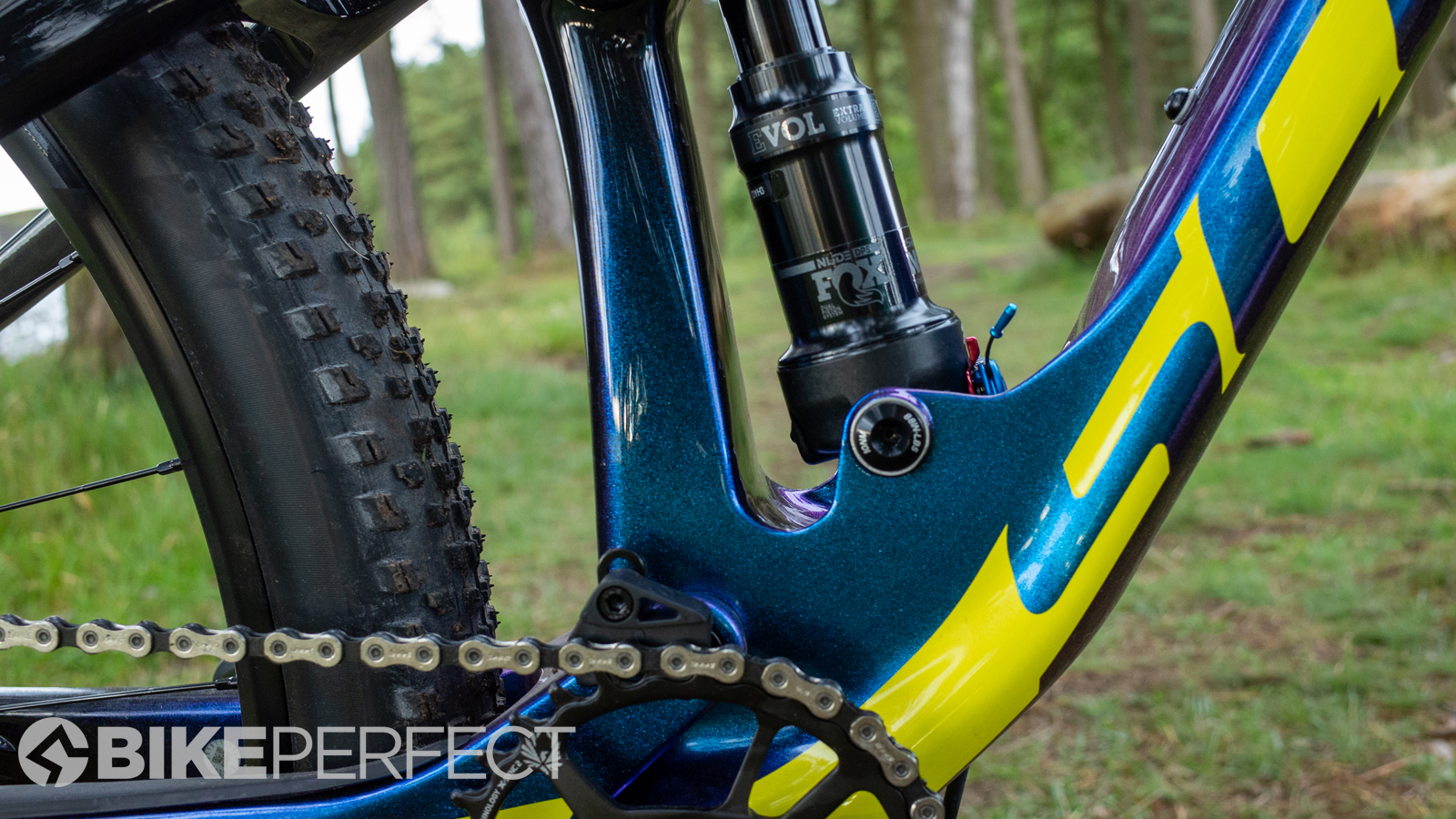
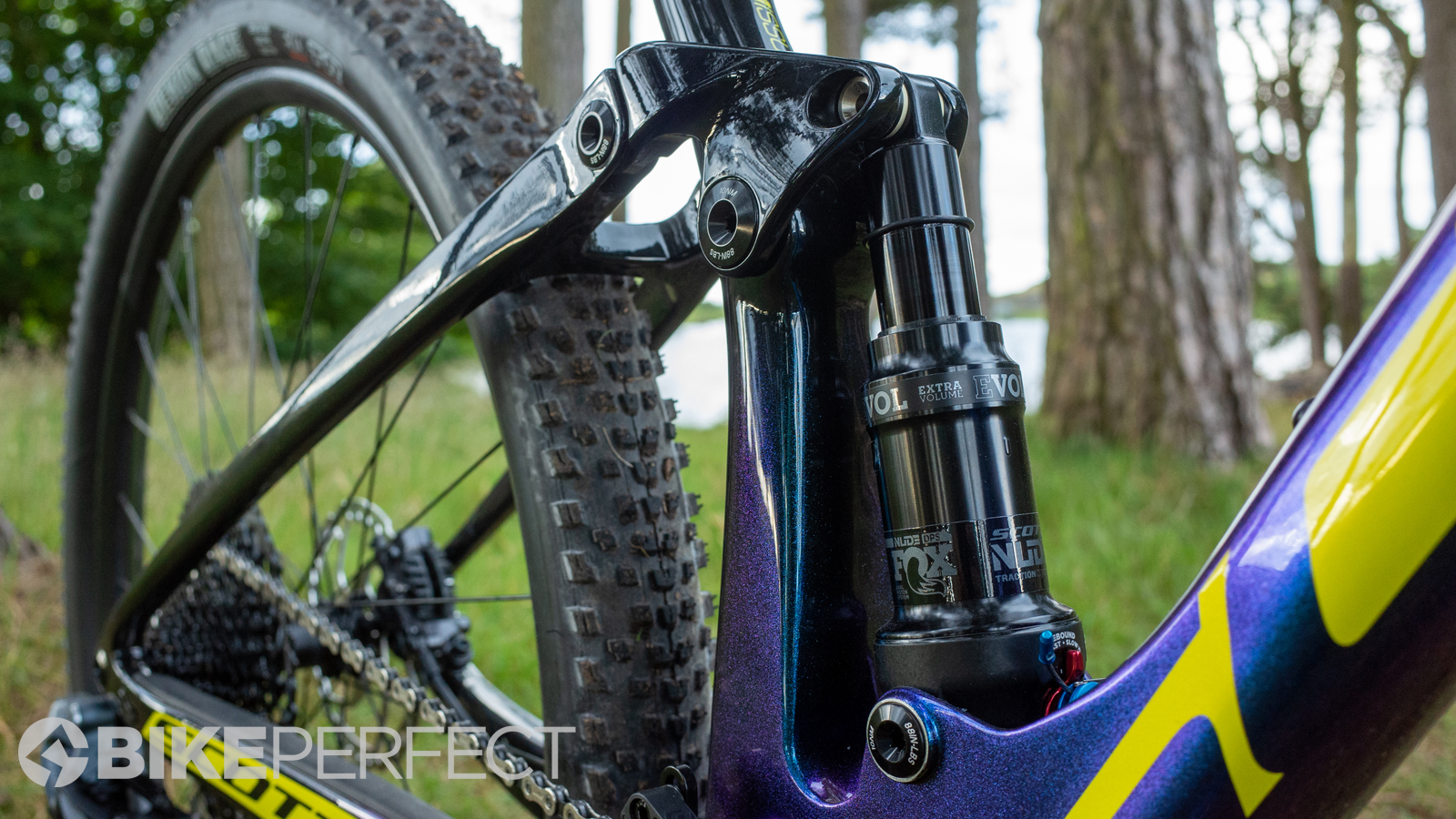
- Best lightweight mountain bikes
- Best MTB GPS computers: the best GPS computer for mountain biking
Components and build
The Spark RC 900 Team Issue AXS has a bit of mish-mash of components, picking and choosing between suspension and drivetrain brands. The suspension is handled by a RockShox SID Select+ RL3 Air fork while a Fox Nude EVOL shock does the work at the rear. Both of these suspension units are managed by Scott’s cable operated Twin Loc system, an under bar-mounted lever that gives the rider on the fly suspension adjustment between three different modes; downhill, traction control and fully locked out. It's more than a simple compression adjustment as well, spring curve changes and travel is altered between 100mm, 70mm or locked out which in turn has an effect on the bike's overall geometry.
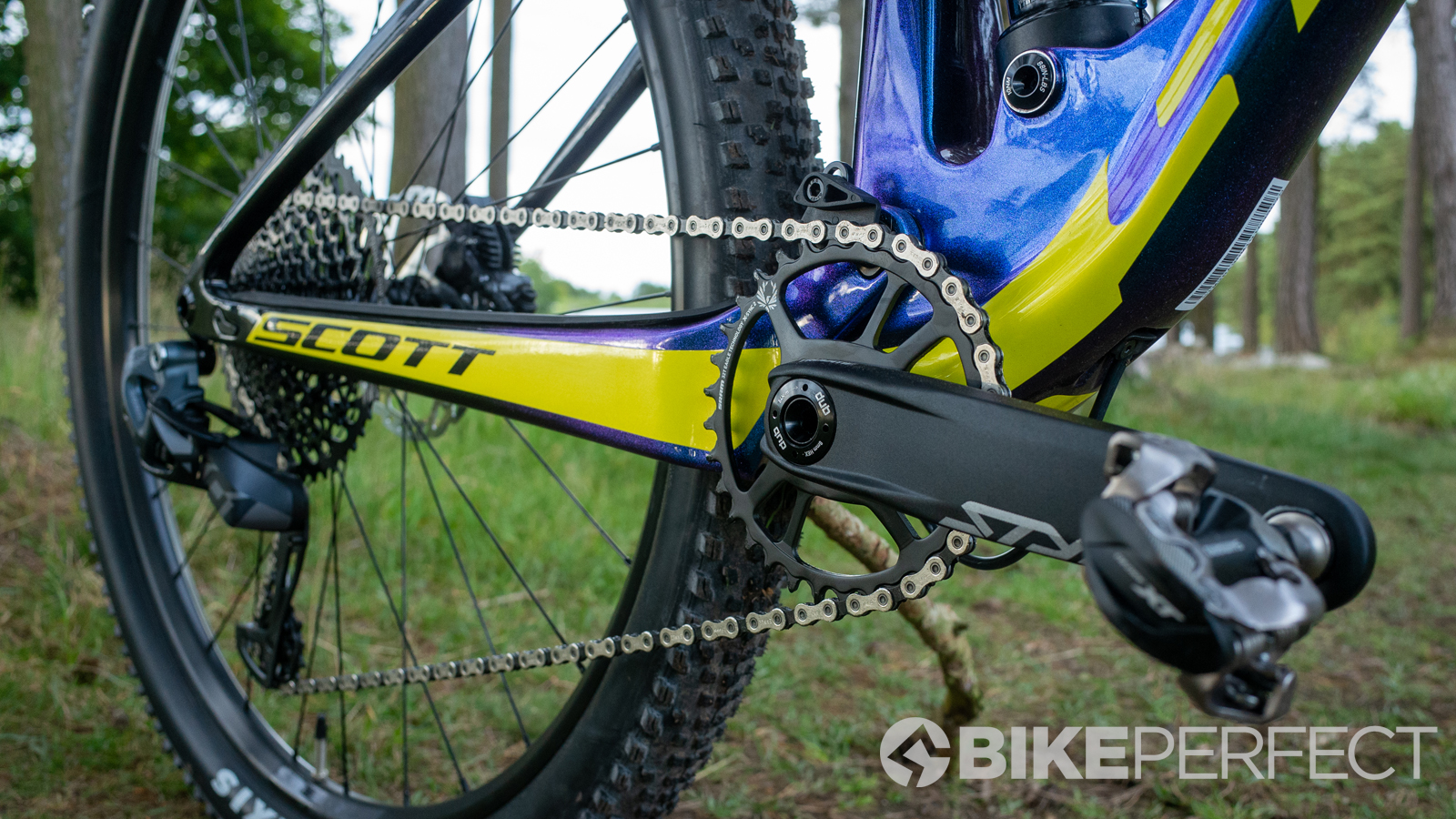
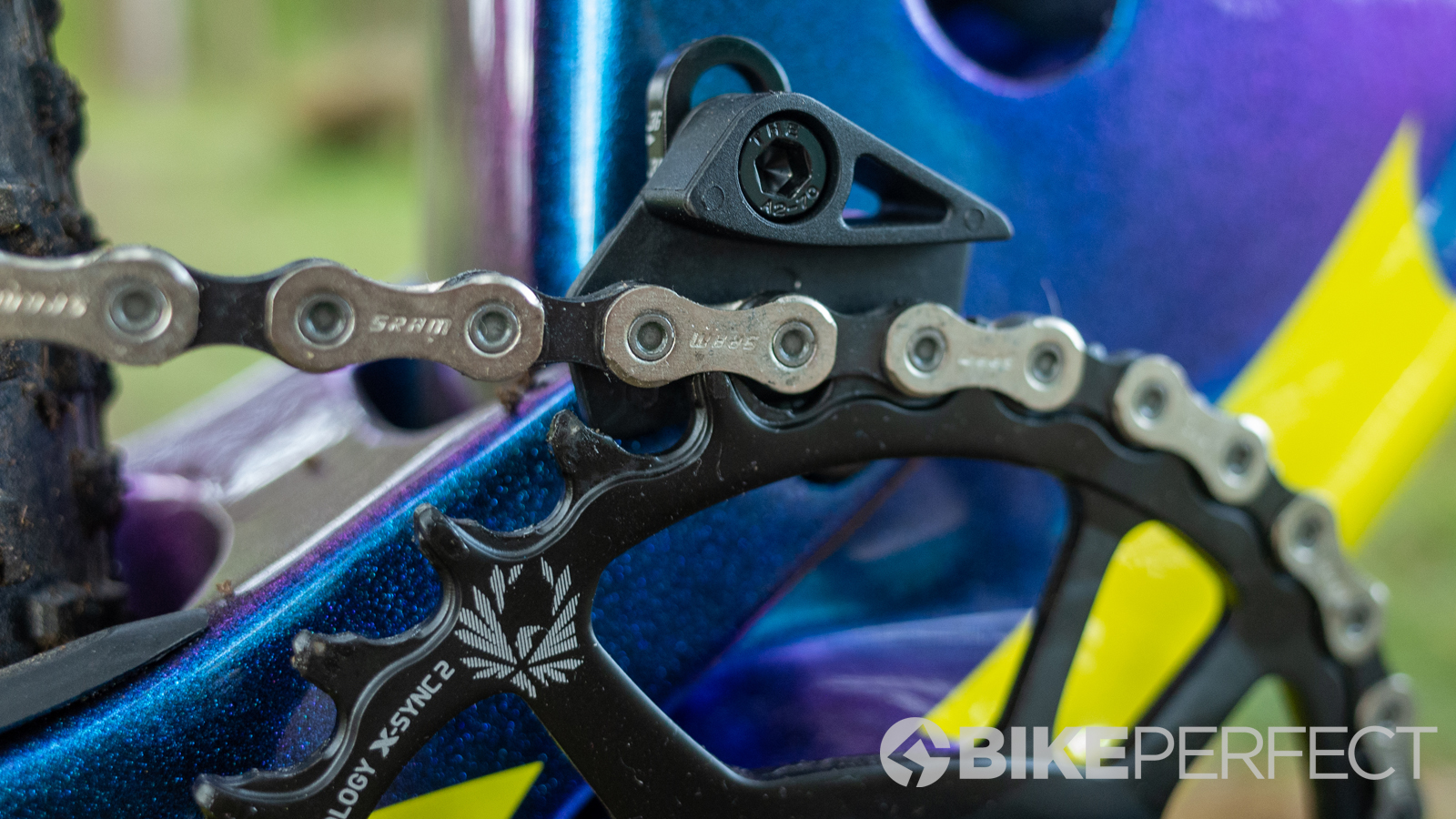
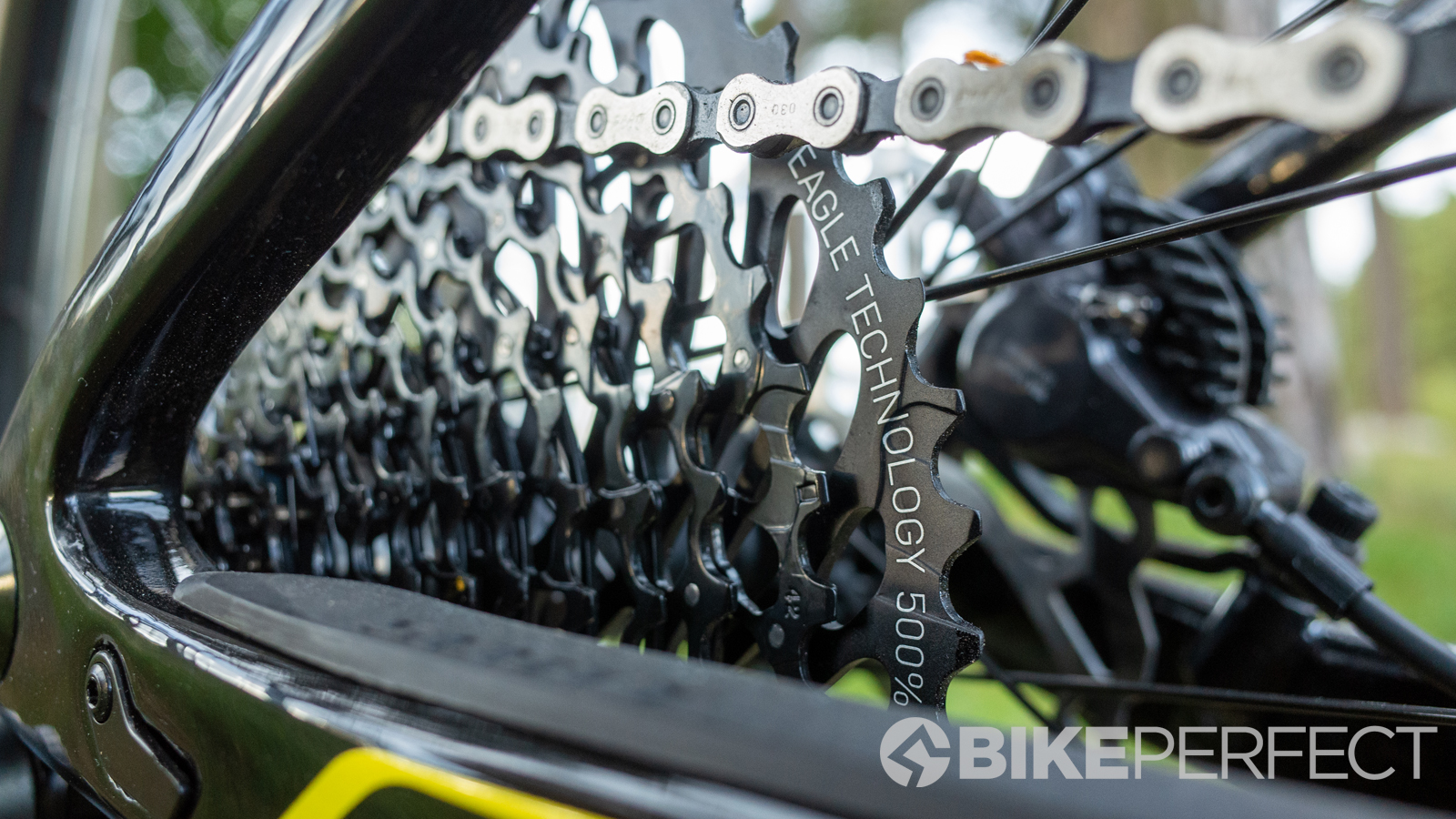
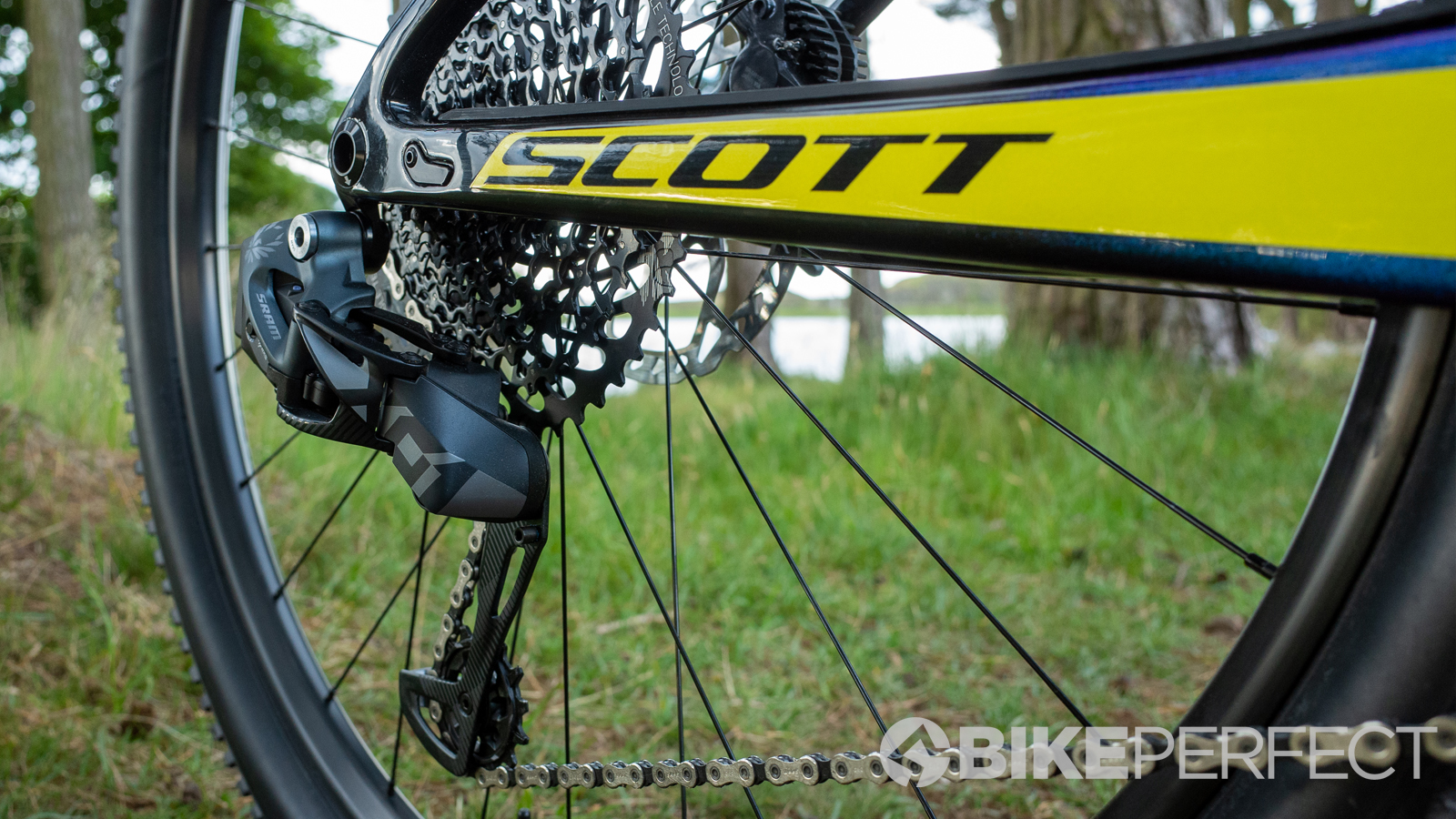
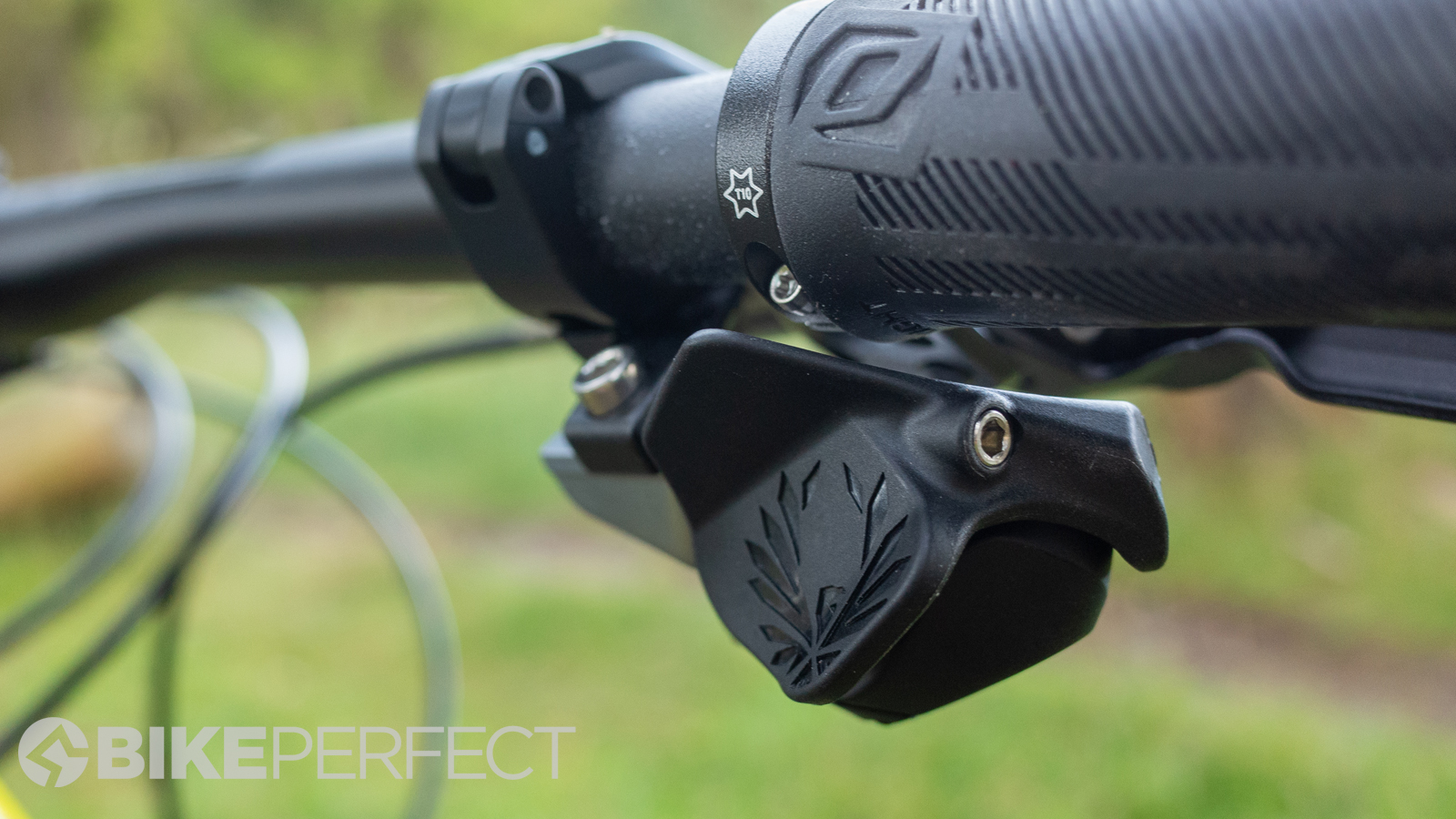
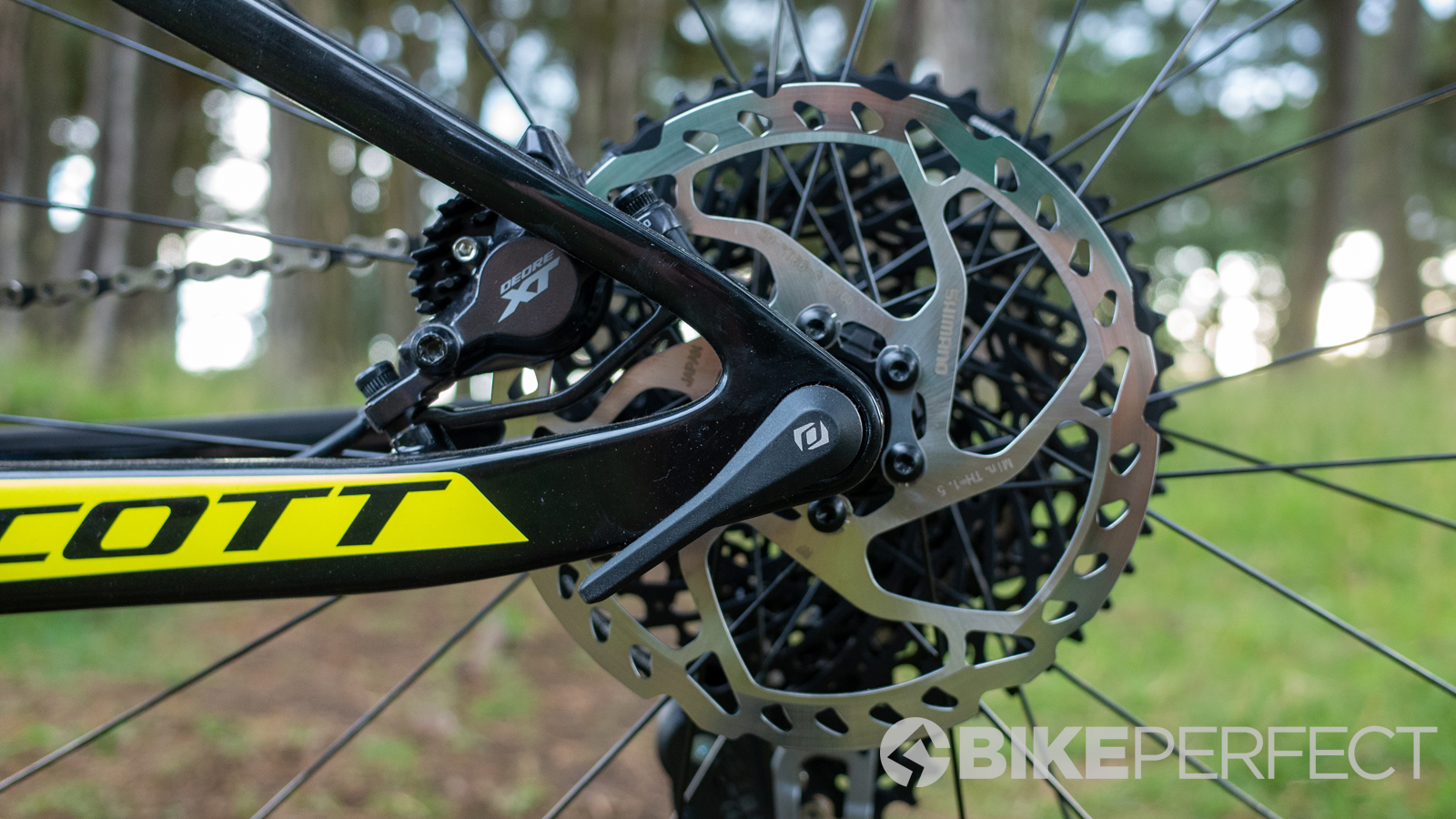
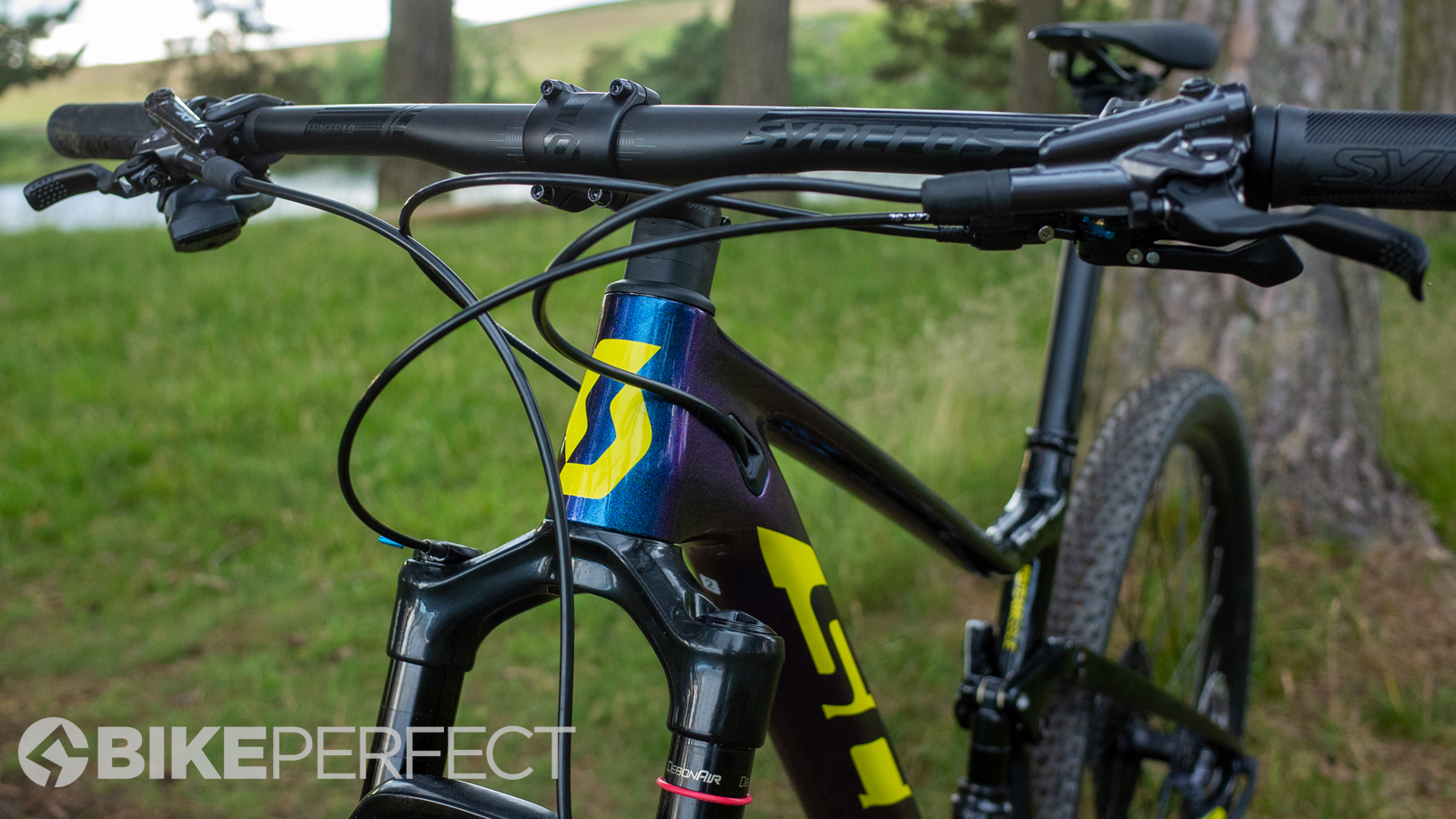
The drivetrain is handled by SRAM’s X01 Eagle AXS groupset which is a stand out feature. SRAM Stylo crankset drives a 32t chainring and is paired with a 10-50t cassette. The wireless gear changes are smooth although they will audible complain should you change under load. The shifter levers rocker design allows thumb and index finger shifts which make it easy to get used to and rear mech adjustments can be easily done on the move by holding a button under the shifter and trimming by shifting up and down. Battery life has been decent with any charging being a ‘just in case’ before a long ride rather than because it ran out on the previous ride. Being picky, the shifter has a very light button throw which often saw me changing more gears than I wanted when jabbing for another gear on technical sections. I would have also preferred to move the shifter inboard a little bit more but because it’s mounted with the brake lever this isn’t possible without also moving the brake lever position. The brakes aren’t from SRAM, instead, Scott has specced Shimano’s XT disc brakes which have a good past record for reliable braking with plenty of power.
Scott’s own brand Syncros takes care of the wheelset and finishing kit. Despite pinballing down some trails that are usually reserved for enduro bikes the Syncros Silverton 2.0 wheels are still running straight and true. The 740mm carbon bars put you in a comfortably controlled position and the 70mm aluminium stem is neatly finished with integrated spacers and top cap. The Syncros Belcara saddle tops a carbon seatpost and has a shape that is easy to get along with even if you have a big ride ahead. Maxxis Rekon Race EXO TR 29 x 2.35in tyres were set up tubeless and roll very quickly although if you are a frequent wet weather rider you will want something with a little more purchase.
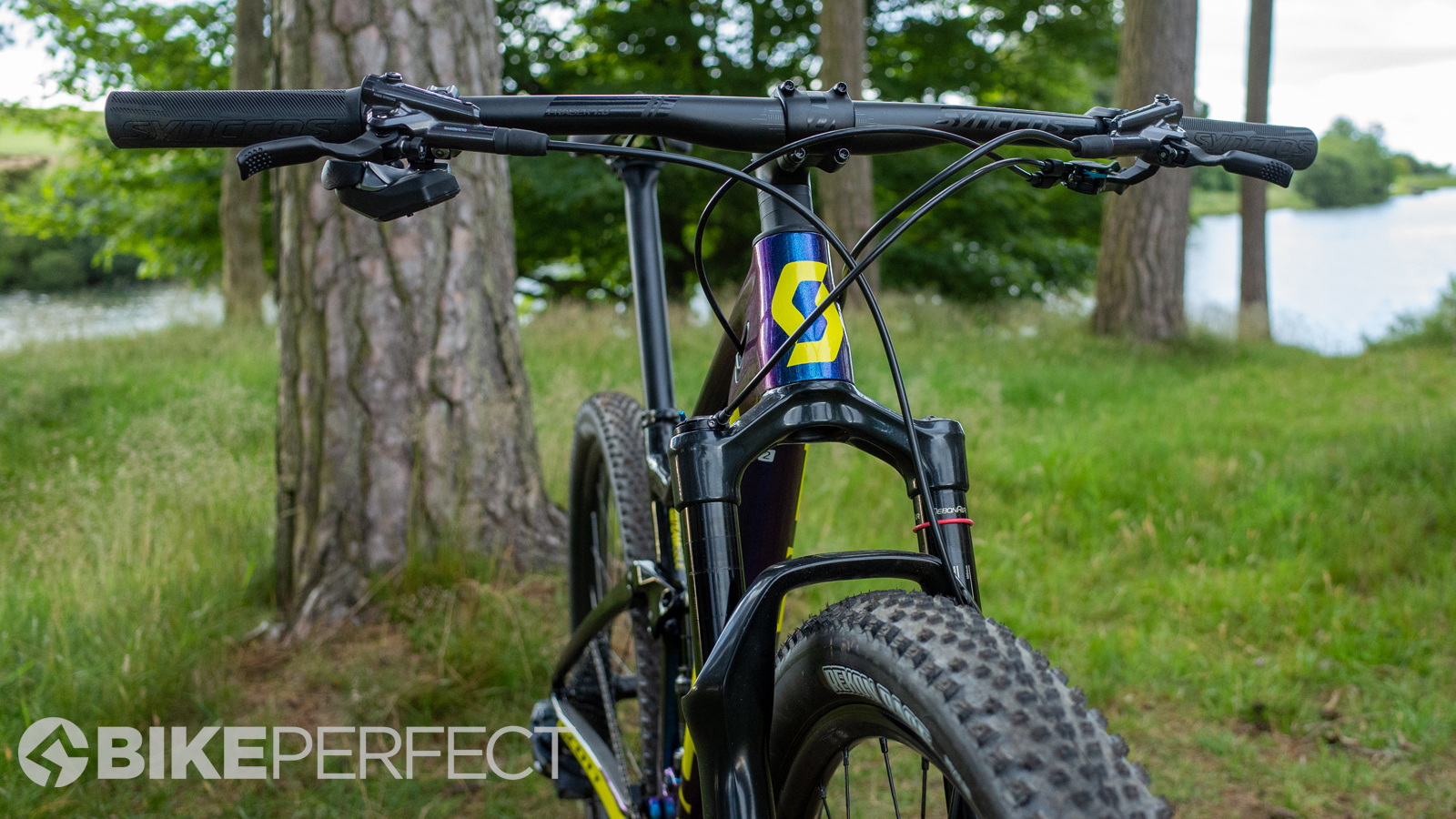
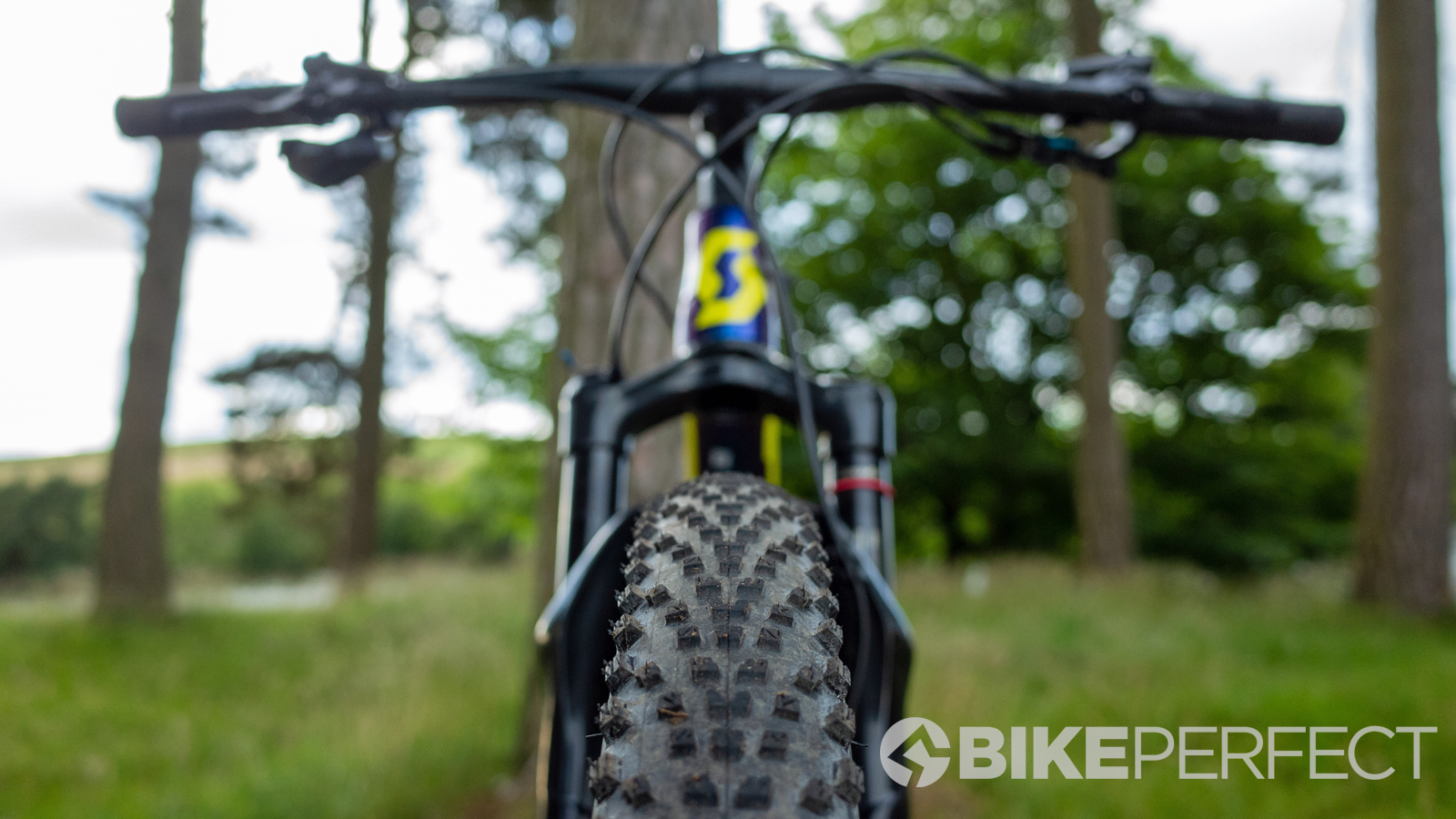
- Best XC forks: the best cross country forks you can buy today
- Best mountain bike tyres: all the top mountain bike tyres reviewed
Ride, handling and performance
In the past, cross-country races were won on the climbs and climbing is still a highly combative part of XC racing. Climbing is impressive on the Spark and the benefits of Twinlock are really seen when covering changeable, rolling and ascending terrain. Locked out, the bike is ultra-efficient driving every watt into the pedals but with the flick of a lever, the suspension can be activated to increase traction. Unless I was on smooth tarmac I preferred the middle traction mode which took out energy-draining vibrations and kept the rear tyre pressed into the ground and driving me forward without sacrificing energy.
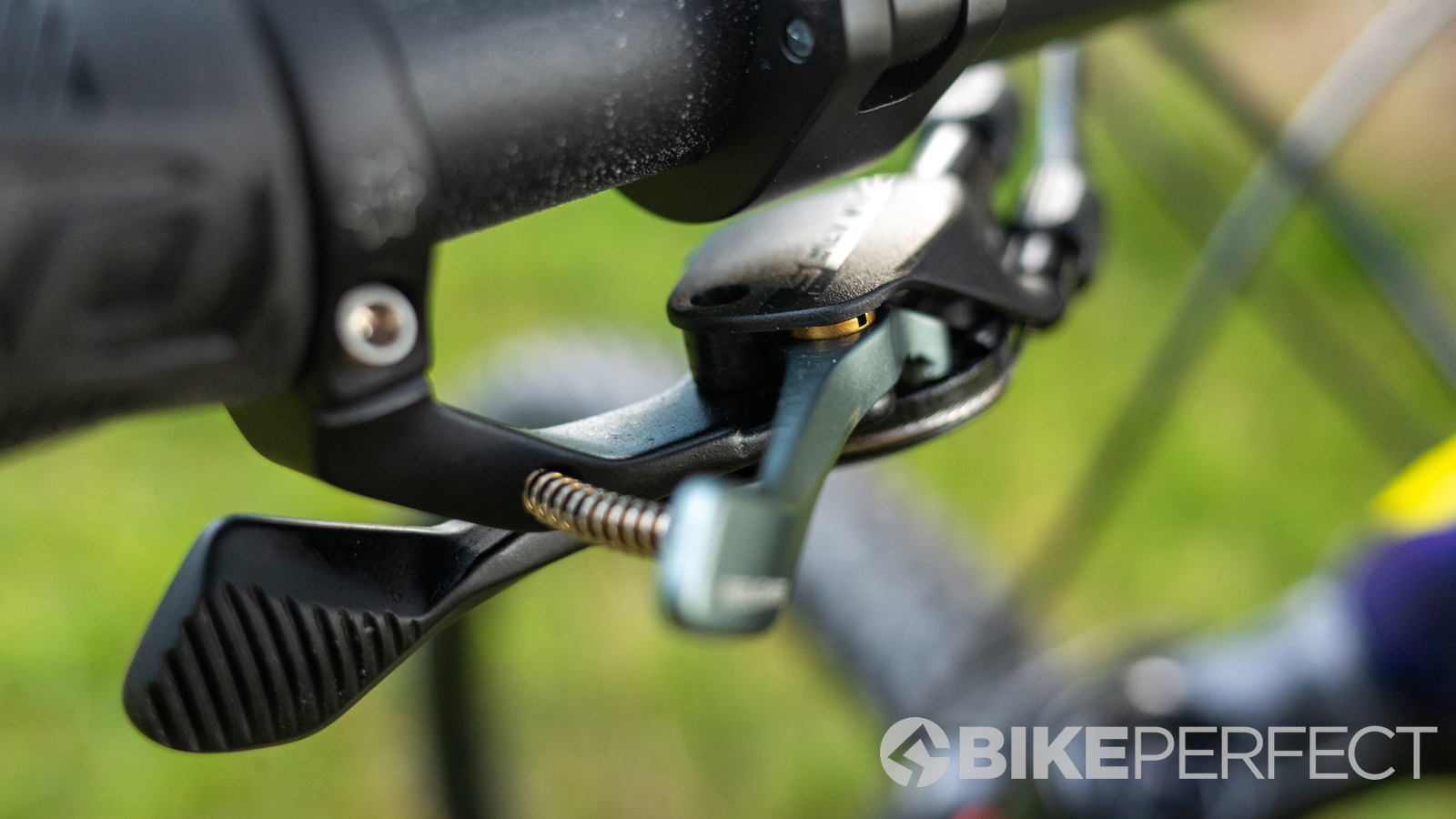
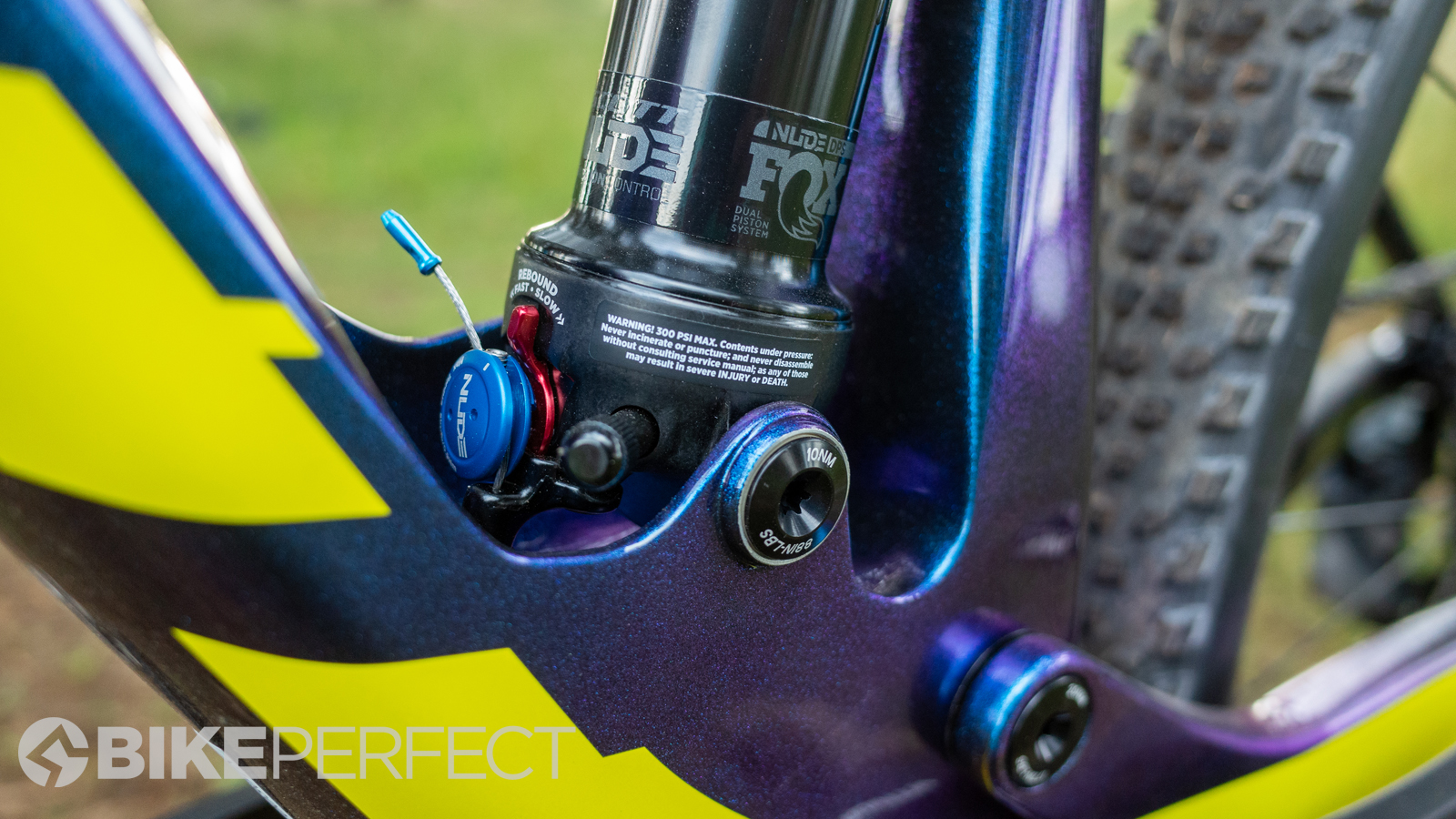
On descents, the Spark is extremely quick which is helped by the well-controlled rear suspension which has impressive small bump sensitivity without becoming overwhelmed when faced with larger hits. When descending speed inevitably picks up, and it will, the Spark feels well balanced and composed willing to listen to rider input and implement it without complaint. Direct the bike into a section of trail that is overwhelming and the Spark doesn’t get flustered, instead, it retains its composure and allows speed and line choice to be brought under control. The RockShox and Fox combo feel well-paired although the shock does outshine the fork in smoothness and small bump compliance.
The Spark seems to generate free speed almost as if the bike gathers energy ready to be released when needed. Fast-rolling tyres and it’s lightweight see the bike scream across flat sections that would otherwise need a healthy dose of pedalling on other bikes to match. If some pedalling is required, the taut suspension and maximised power transfer encourage tank draining sprint efforts. The feeling of free speed is also felt when exiting corners with such an effect that it's almost as if the bike leaps out of berms. In twisting back to back corners this caught me a little unaware at first however once expected it's simply another tool in the Sparks descending arsenal. Based on Strava’s adjudication, I saw a number of results on segments that I have ridden many times before which were somewhat embarrassing to bikes that, on paper, should be far more capable descenders.
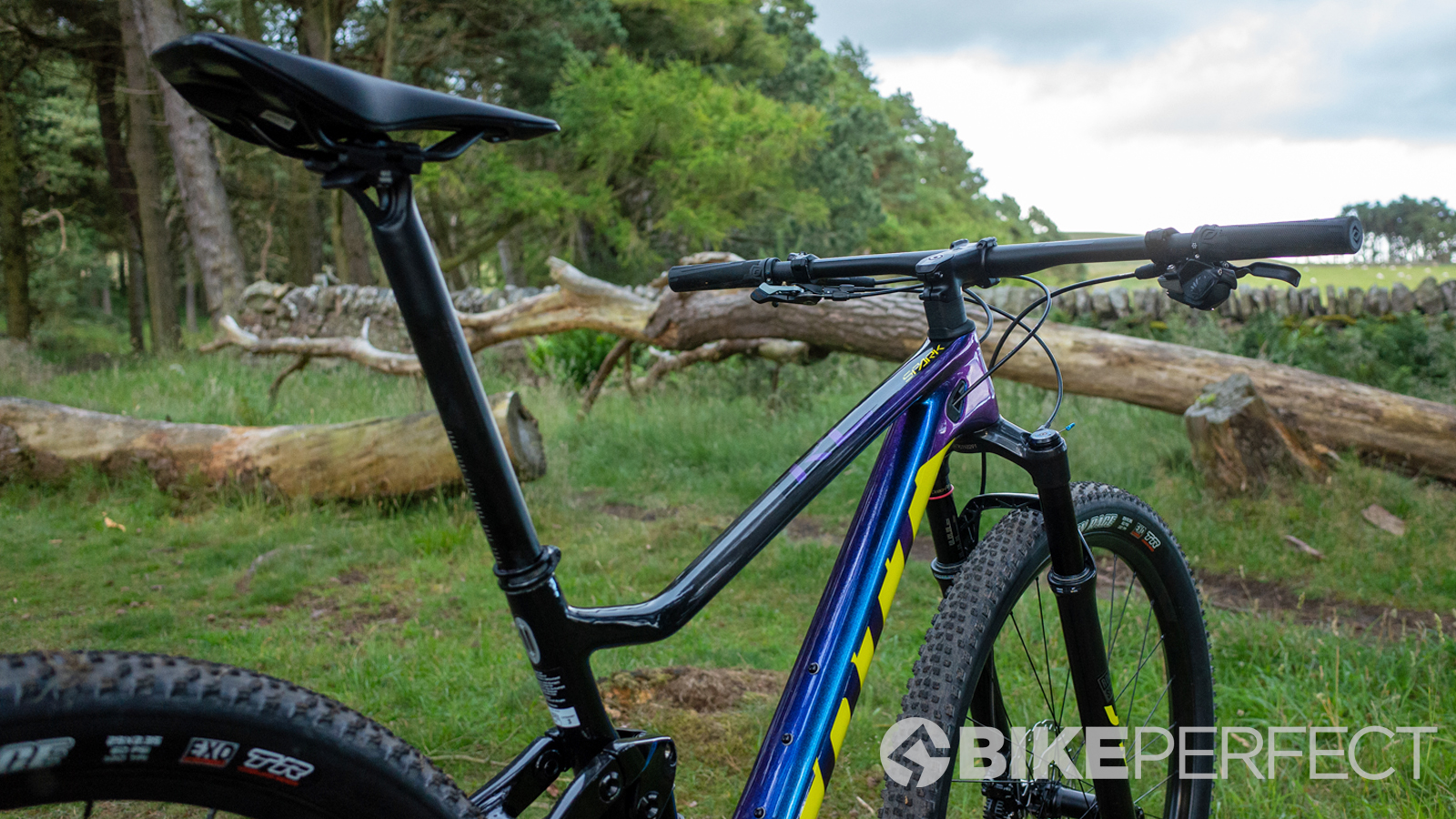
The short reach might seem a little dated now but the position reminds me of older trail hardtails with a poppy characteristic that is easy to feel comfortable and familiar with. On the trail, the bike encourages you to flick off lips and roots to clear doubles and rough sections of trail. I only ever felt limitations in the geometry when dropping into extremely steep terrain far beyond the Sparks remit and where the component choice becomes limiting, notably the seatpost. There’s no dropper post but considering this is a race orientated bike makes sense as it saves weight. Not being able to drop the saddle does limit the rowdy levels, which is probably a good thing with a frame that’s this willing to ride any trail. If the lack of dropper is a deal-breaker you may be better served by Scott’s on-trend downcountry appropriate version of the Spark which has increased travel and a more robust spec.
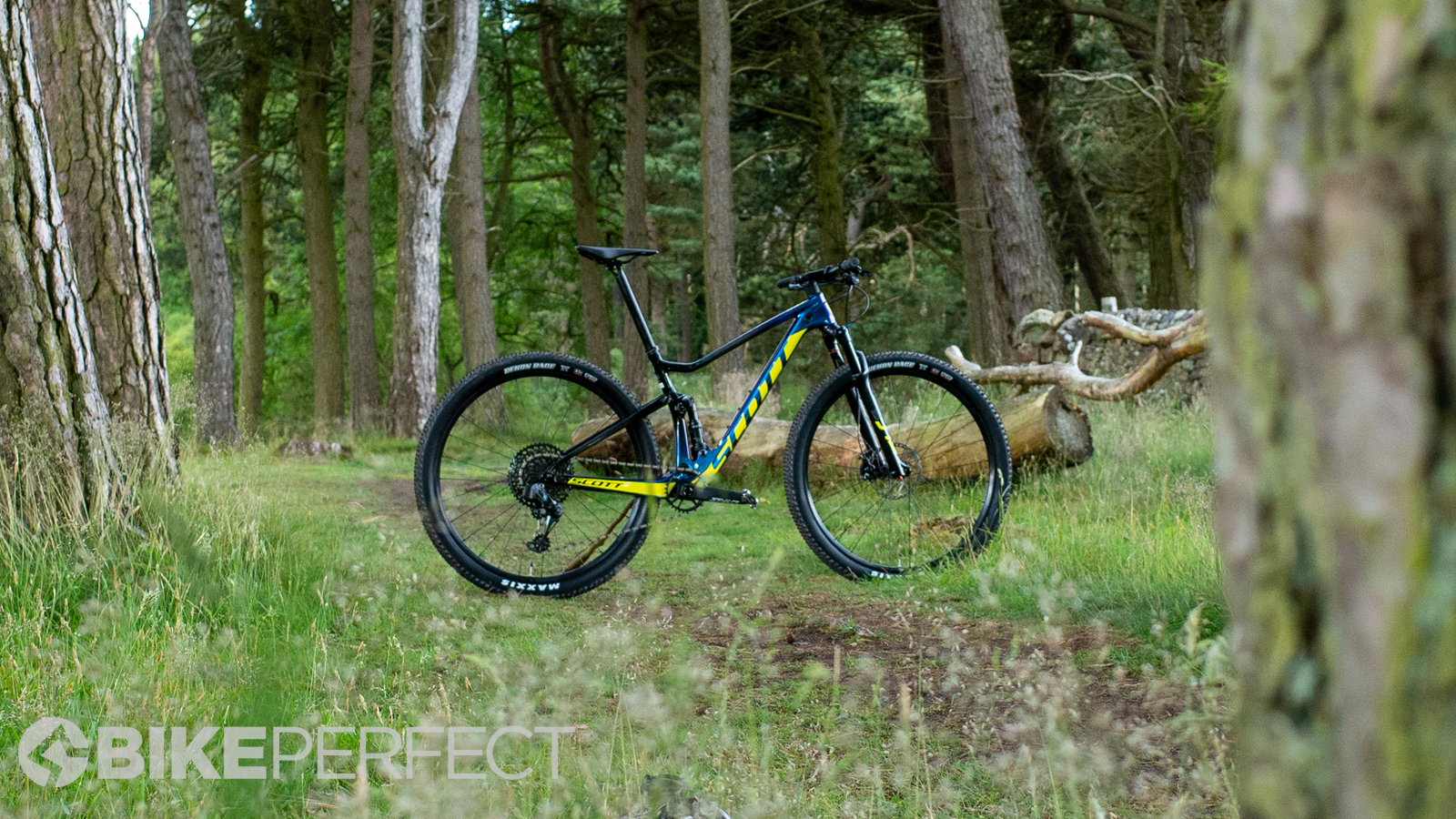
Verdict
The Spark may be a few years old now but it will still make you reevaluate what you think is possible on a true cross country bike. With modern geometry improvements, a lot of shorter travel bikes are now far more capable, a trend most obviously seen in the rise of the downcountry bike. The Scott still gives the new breed of downcountry bikes a run for their money and under a skilled rider will plough into trail bike territory and beyond. Tackling trails you would otherwise think were beyond a bike with just 100mm of travel front and rear
The staggering control from the rear suspension, stiff frame and feathery weight makes for an extremely precise and poppy ride characteristic. You can push the bike hard and should the terrain be rowdier than expected, it doesn’t suddenly become overwhelmed. Instead, it holds composure, readjusts and carries on. The cockpit and wheels are stiff enough to manage heavy-handed corrections but not so much that they are brutally stiff or cause an erratic pinball effect through chunder.
The bread and butter of an effective cross country bike is its ability to cover ground, the Spark spins over hills and along flat sections with incredible efficiency. The Twin lock wouldn’t necessarily be missed but having it available at such convenience results in it getting used a lot to find marginal gains from suspension adjustment.
The Scott Spark has been an incredibly fun bike to ride, from short high tempo blasts after work to long marathon-style days, for those that get their kicks from speed will love the bikes ability to maintain velocity. It’s clearly a race bike but the Sparks composed trail characteristics won’t punish riders who lack the muscle twitch reaction times of an elite racer which means that the everyday cross country enthusiast can get a taste of the addictive speed that comes with race-tuned cross country performance.
- Best XC and marathon helmets: how to choose the best XC helmet for you
- Best mountain bike shoes: how to choose the best MTB shoes for you
Test conditions
- Temperature: 15-25 degrees
- Mileage: 489km
- Surface: Natural singletrack, technical man-made red/black graded trails and gravel road
Tech Specs: Scott Spark RC 900 Team Issue AXS
- Discipline: XC
- Price: £4,500
- Head angle: 68.5 degrees
- Seat angle: 73.8 degrees
- Frame material: Spark RC Carbon HMF frame
- Size: Medium
- Weight: 11.2kg (claimed)
- Wheel size: 29in
- Suspension (front/rear): RockShox SID Select+ RL3 Air (100mm), Fox Nude EVOL Trunnion Scott custom w. travel / geo adj (100mm).
- Components: SRAM X01 Eagle AXS 10-50T 12 speed gearing and shifter. SRAM Stylo Eagle DUB Boost 32T. Shimano XT brakes with 180mm (front) and 160mm (rear) rotors. Maxxis Rekon Race EXO TR 29 x 2.35in tires on Syncros Silverton 2.0 wheels. Syncros Fraser 1.0 Carbon bar (740mm) and Syncros XR1.5 stem (70mm), Syncros Duncan 1.5 seatpost and Syncros Belcarra Regular 1.5 saddle.

Graham Cottingham joined the BikePerfect team as our senior tech writer in 2020. With over 20 years of riding experience, he has dabbled in downhill, enduro, and gravel racing. Not afraid of a challenge, Graham has embraced bikepacking over the last few years and likes nothing more than strapping some bags to his bike and covering big miles to explore Scotland's wildernesses. When he isn’t shredding the gnar in the Tweed Valley, sleeping in bushes, or tinkering with bikes, he is writing tech reviews for BikePerfect.
Rides: Cotic SolarisMax, Stooge MK4, 24 Bicycles Le Toy 3, Surly Steamroller
Height: 177cm
Weight: 71kg
